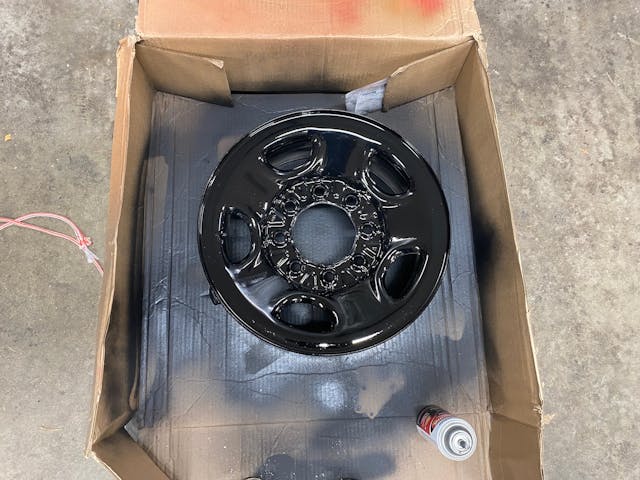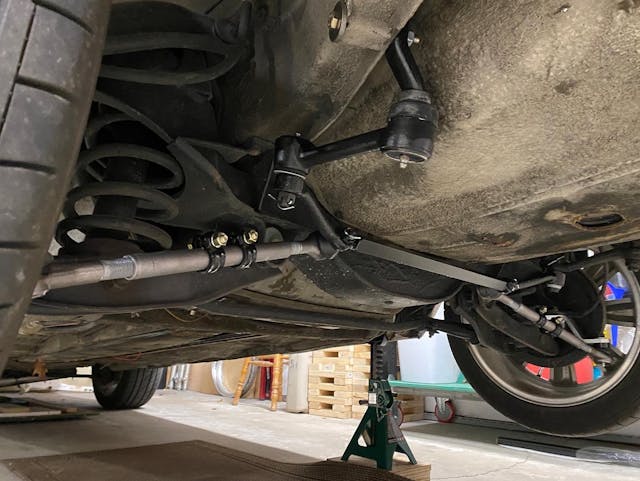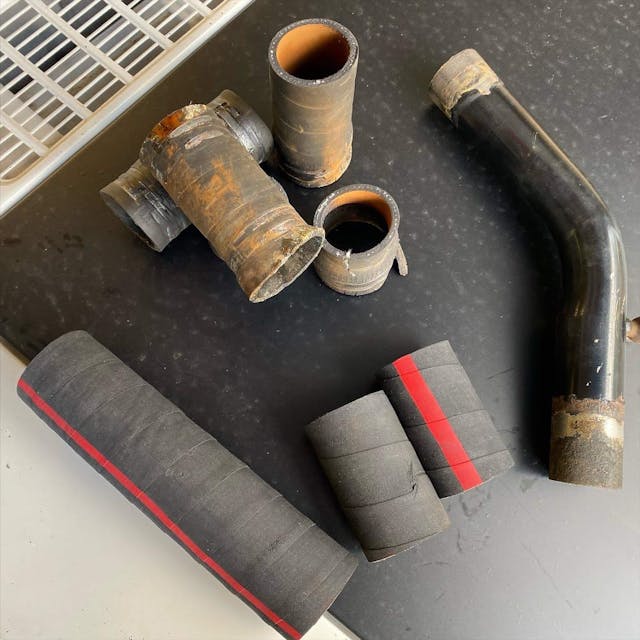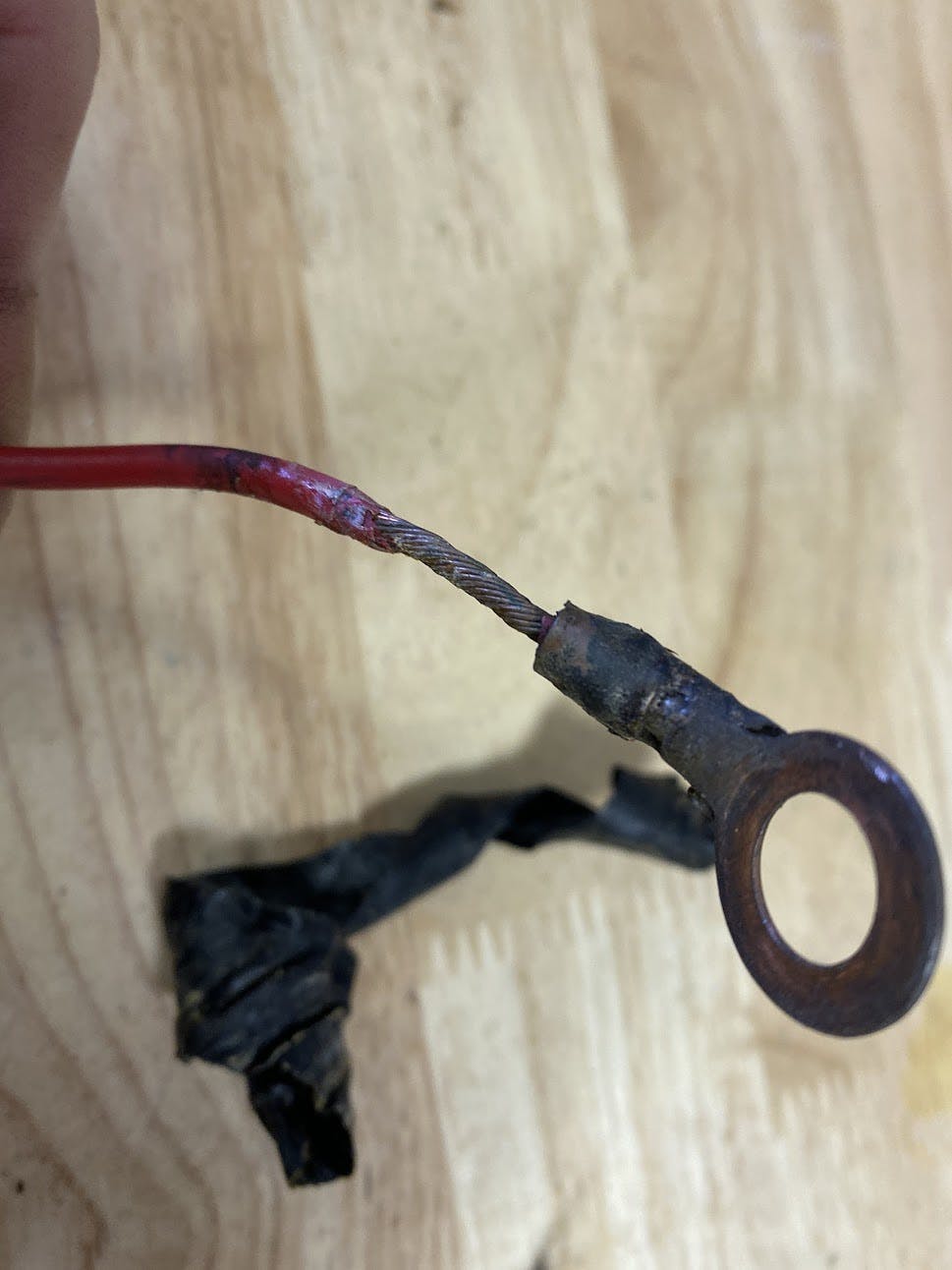11 winter project ideas for every skill level
Not all car lovers are lucky enough to have an endless driving season. Most of us are stuck with at least a few weeks, or months, where our beloved rides are parked and waiting for the snow, or more importantly the salt, to clear from the roads so we can resume enjoying our cars the way they were meant to be enjoyed. The down time can be tough, but those winter months are a great time to seek out less time-sensitive projects. While we often think of “winter projects” as items that require high degrees of skill, not everything worth doing in the off season needs to be that intense. In the interest of being inclusive, we decided to put together a list of ideas for all skill levels to take some pride in their car and complete some DIY tasks during the colder weather.
Paint correction

The first thing that most notice about a car is its form, but the second is the paint. Long periods of storage are the perfect time to give aging paint the attention it deserves. If if you wash and wax your car religiously, there will inevitably be small scratches that build up and cause a light haze in the paint. A light hand polish is a good starting point and you have all season so don’t be afraid to take breaks and stop to admire your work. Heavier scratches might require the use of power tools; if that’s the case, be sure to get comfortable with how the tool and compound works on a test piece before tackling your hood. A full paint-strip and respray is a large task for one winter—caring for the paint you already have is not.
Wheel refinishing

You aren’t going to miss out on a drive or a gathering this time of year, so might as well put the car up on jack stands and pull the wheels. A fresh coat of paint or even just a deep cleaning can dress up your ride more than most realize. For example, there are masking kits and rattle-can paint kits that can be purchased for Pontiac wheels that make refreshing your wheels easier than ever. You can even leave the tires on to do the work.
Wiring inspection
Yes, we know you hate wiring. That’s part of why this suggestion is involves inspecting the wire, and nothing more. A loose ground, worn-through insulation, or a weak connection can all conspire to leave you stranded on the side of the road or spending hours searching for the issue when your car is acting up. Take the time now to pour over the wiring harness and make sure it’s in tip top condition. This can often can be done with just a decent pair of eyes, but if something looks out of place or wrong, you might need a multimeter—which we suggest having around your garage anyway.
Fluid flushes

When is the last time you changed your coolant? Brake fluid? If you don’t know or the date is beyond a few years, you should ring up a few bottles at the auto parts store and get out your drain pan. Even with sparing use, fluids age. Flushing is cheap insurance against corrosion and unplanned failure. This can be as simple as a drain and fill, and get as complicated as pushing fresh fluid through the brakes without introducing air. Take the time to get this right, and you can be confident that overheating or a soft brake pedal won’t plague your drive come spring.
A chassis lube
It used to be a part of regular service, but now is rarely talked about since these cars rarely rack up miles like they did when new. Grab a grease gun and push in fresh grease to any chassis fittings outlined in your service manual. Don’t forget the window regulators, heater blend door adjusters, door latch mechanisms, and all the hood or trunk hinges for extra credit.
Steering box adjustment and steering system inspection

Most folks think slightly wandering steering in an old car simply comes with the territory—but it might not have to be. Most steering boxes have a point of adjustment that can remove some slop and play from the system. Combine this with a check of the rest of the steering components (tie rod ends, pitman arms, ball joints, etc.), and you will turn into your spring cruise in with a little extra confidence.
LED bulbs
It only takes a few minutes driving among today’s vehicles to realize that modern headlights and taillights have gotten bright. Vintage car lamps are, well, not. Incandescent bulbs were pretty good for a long time but it is easier than ever to retrofit your vintage ride with light emitting diode (LED) bulbs that put out more light while drawing less power. Win/win, especially when you add in that LEDs also last longer and fit into factory sockets in most applications.
Research
This one is for those of you who don’t want to pick up tools or have cars that need to be stored away from home. Find a book that documents the history of your car or its manufacturer and get to reading. Learn at least one new thing and be sure to share it next time someone strikes up conversation while you are out and about.
Leather cleaning and conditioning
Your interior ages slowly enough that you might not even realize how dirty it is. Reach into the cleaning solutions drawer and get your leather or cloth seats cleaned up. Bonus points if you deep clean your carpet while you’re in there. These chemicals often need a little time to dry, making winter storage the perfect time to ensure that everything gets clean and dry before you are sitting in the seat again.
Spare-tire inflation check
We hope you don’t need it either, but you certainly want your spare tire to be ready if you do. Roll under the car or pull off the cover and inspect that spare tire. You might need to replace it completely, or just add some air to make sure it’ll be ready to roll in a sticky situation.
Under-hood rubber inspection

Similar to inspecting your wiring, grab a flashlight and get under the hood to check on your rubber hoses and lines. Engine compartments get hot, and that takes its toll on rubber pieces. If the hoses are getting stiff or showing any signs of cracking, it’s time to go ahead and replace them. Yes, we saw The World’s Fastest Indian too, but filling those cracks with shoe polish is a cosmetic bandaid, not a savvy fix. If you want to prevent an exploding hose from leaving you stranded waiting for a tow truck, skip the polish and head to the parts store.
Check out the Hagerty Media homepage so you don’t miss a single story, or better yet, bookmark it.





All decent points and several of these are on my to-do list this winter. I would also suggest that while you’ve got the car up on stands and those wheels off, you do a thorough check and cleaning of those brake parts. Brakes get ignored a lot, but they get filthy AND hot, both of which can lead to troubles. These are troubles you don’t want to show themselves on that first Spring cruise!
the 65 got a disc brake conversion, the 75 got all new calipers all the way around, the 90 and 94 have both popped at least one brake line each in recent history – so all of my master cylinders have some pretty pristine fluid in them whether I intended it or not
LED bulbs=no. The old cars just look to weird with that bright white light. The yellow is not as good but it is original. Looks original as well. LED are better but who is driving at night anyway. For me the drive is Daylight and Dry.
I agree on the headlights – but think about brake, tail, and turn bulbs. Anything that gives you an edge over the in-attentive driver behind you helps.
Couldn’t disagree with you at best. LED’s provide greater safety even in daylight. BTW, I drive day, evening and night. My Mustang is not a trailer queen, sorry.
LED bulbs, brake lights, tail lights, head lights, are a safety item, especially if your car has an original 6 volt system. I was following a 65 year old 6 volt car on a tour a few years back. In the daylight, you could not see any brake or turn signals unless you were unsafely following to close. I will gladly give up a little change in appearance for a big gain in safety.
Regarding rear brake lights and rear turn signal lights: i purchased and easily substituted 5-volt bulbs on my 6-volt all original ’55 Plymouth and they are dramically easier to see in daylight. (I never drive it at night anyway) i also lined the interior of the light housings with bright foil tape. More light and safety.
You can get LEDs in almost any color “temperature” these days. It is pretty easy to replicate the “warmth” of older bulbs, if desired, with the brightness and much lower draw of LEDs.
My wife and I are now 60 years young and driving the G Body at night is not what it used to be. We put the most stock looking LED headlights in and wow, what a difference it made and they do look original in terms of color, just a lot brighter.
Brake and turn signal bulbs in L.E.D. are a must! “I” can’t take a chance even in daylight to not be seen.
Yeah, and in actuality, brighter bulbs are even MORE visible in daylight, so even if you don’t drive at night, brighter makes sense!
Pour instead of pore is poor. (Aggressive auto-complete in action?) Pouring anything onto a wiring harness may not be the best course of action. Otherwise, good suggestions in this article. Perhaps also a good time to remove and rebuild fiddle-prone items like tube radios and the like.
Thanks. As a die hard grammarian I notice these mistakes. I’m glad someone spoke up.
What is it exactly that I’m supposed to “pour” over the wiring in my winter project? Antifreeze? Jack Daniels? Oh! You meant “pore” which is different. Merry Christmas, Kyle!
Carpet & deep interior cleaning! I mean all the little nooks with q-tips we might skip by during the driving season.
That is actually #2 on my “winter to-do” list for the car. Number 1 on the list seems to be: find the energy to go out and spend much of an entire day deep-cleaning the car’s interior. Once I get #1 accomplished, I’ll proceed to #2. 😏
Careful with LED taillights on certain Fords. I installed led taillights on my 1997 F250 and all of a sudden the automatic transmission wouldn’t shift correctly. Every time I would hit the blinker or tap the brake it would downshift. Come to find out they are electric shift transmissions and need the resistance of a filament bulb to properly shift. I reinstalled the old bulbs and it shifts like it should. Whooda thunk???
Maybe: Add a 2nd receptacle in parallel (for the filament bulb) and place LED bulb where filament bulb was in its stock location thereby protecting the needed filament resistance plus adding brightness with the LED.
Funny you mention your transmission reacting to the taillights. When my 95 F350 power stroke was fairly new I noticed my cruising rpm would fluctuate. Then I realized it would fluctuate when I used the right turn signal. Lived with it a while until I found the bright filament in the taillight was burned out. Replacing it fixed the lockup torque converter from disconnecting when the turn signal was used
I do a lot of this when I put our baby up for the winter. My husband wants to keep our 1950 Chrysler Imperial as original as possible, so I can make very small changes the LED lights is too much – I tried before. I will be getting the paint in order. I finally got the interior set just a few little touches. Now the body 19 1/2 feet worth and all that chrome.
My planned job for this winter is replacing the heater control face, I bought one about two years ago and then a mouse, or other critter, decided that I needed to fix my gas gauge wiring instead last winter. I know how the climate controls work so gas gauge it was, heater this year.
A comment on LED lights, be careful, they are not always street legal, as in almost never street legal. This has to do with the way the LED bulbs do not illuminate the inside of the light housing the same way as a filament bulb so they are actually less visible than a dimmer filament bulb from some angles, like from the side you are going to get on. I want to go LED but this is holding me back so far. Not to mention some LED bulbs do not work in old flasher applications because they do not provide enough of a power draw, resistance, to flash properly.
When I changed to LED’s on my ’68n Camaro the bimetal flasher had to be replaced with a digital one. Works fine.
Project 1 – Move to a warmer climate – eliminates winter projects.
Project 2 – Cruise every week
Project 3 – repeat Project 2
How about an oil change and a tuneup? Easy winter projects and car is ready for the spring. Also, ask Santa for a battery tender and use it this winter. 😀
This winter the project will be a new exhaust system.
I hate the LEDs on the Ford pickups! Blinding light for whoever is in front of them. Auto dimming does not work for traffic in front of them. Next time you have one behind you notice how much your interior lights up. I don’t think it’s just me. My gripe with leds.
I paint my rims every year. Easiest way is to lay them flat, deflate the tire and insert carboard in the gap between the edge and the rubber. Paint, and inflate, back in business.